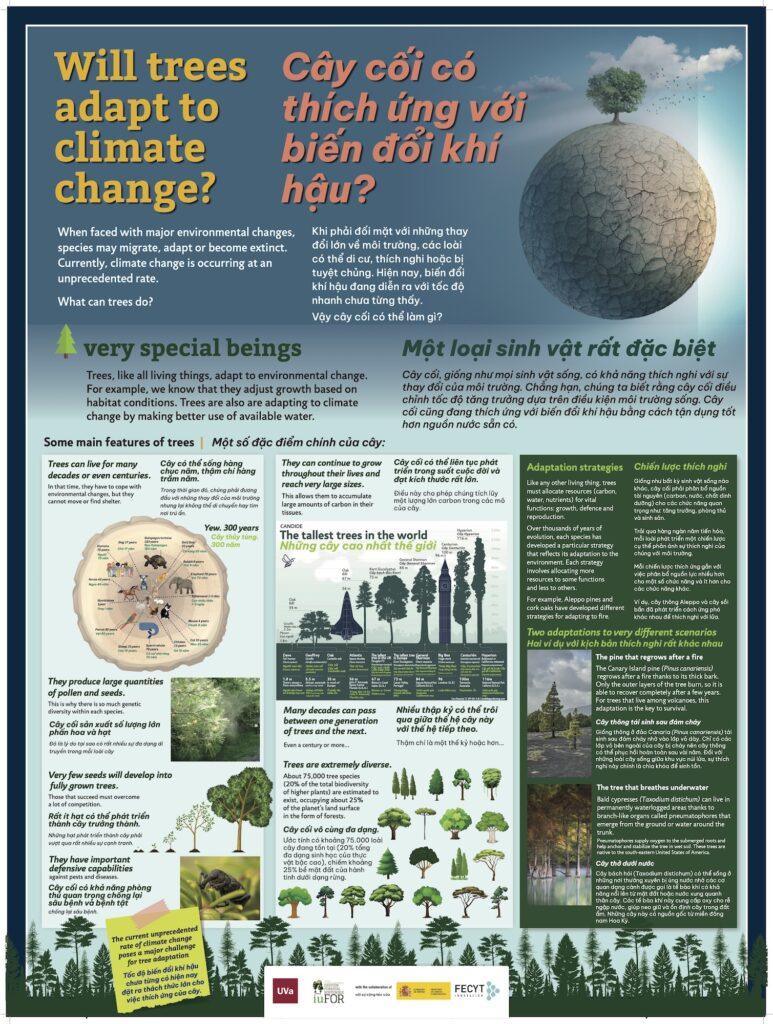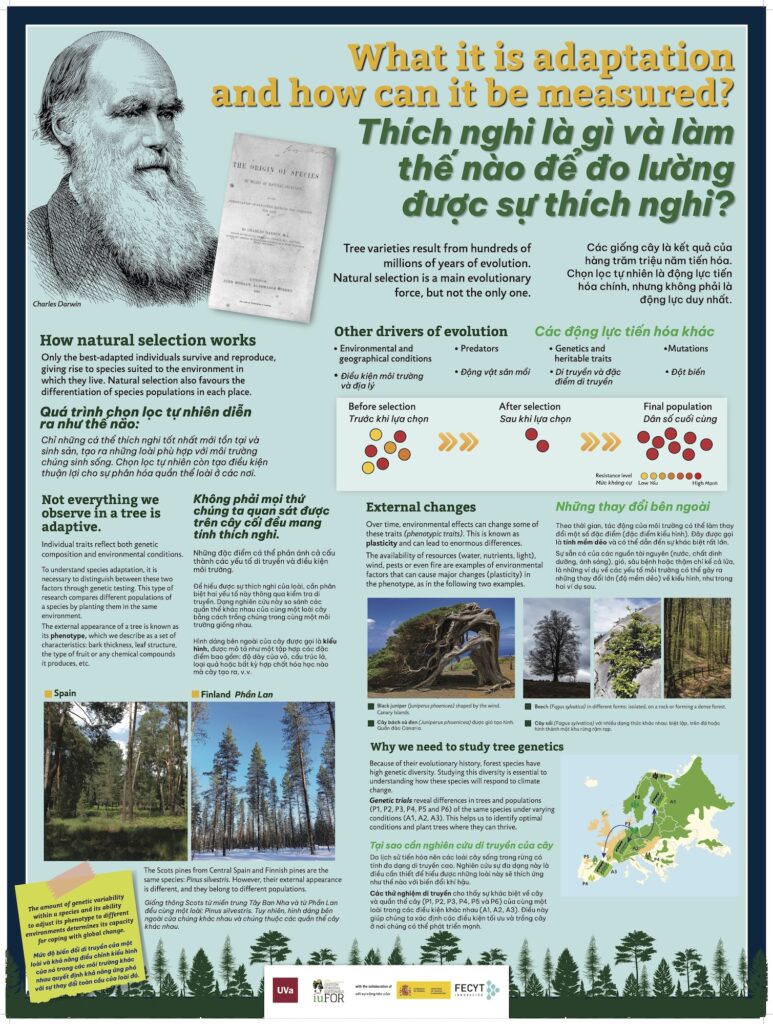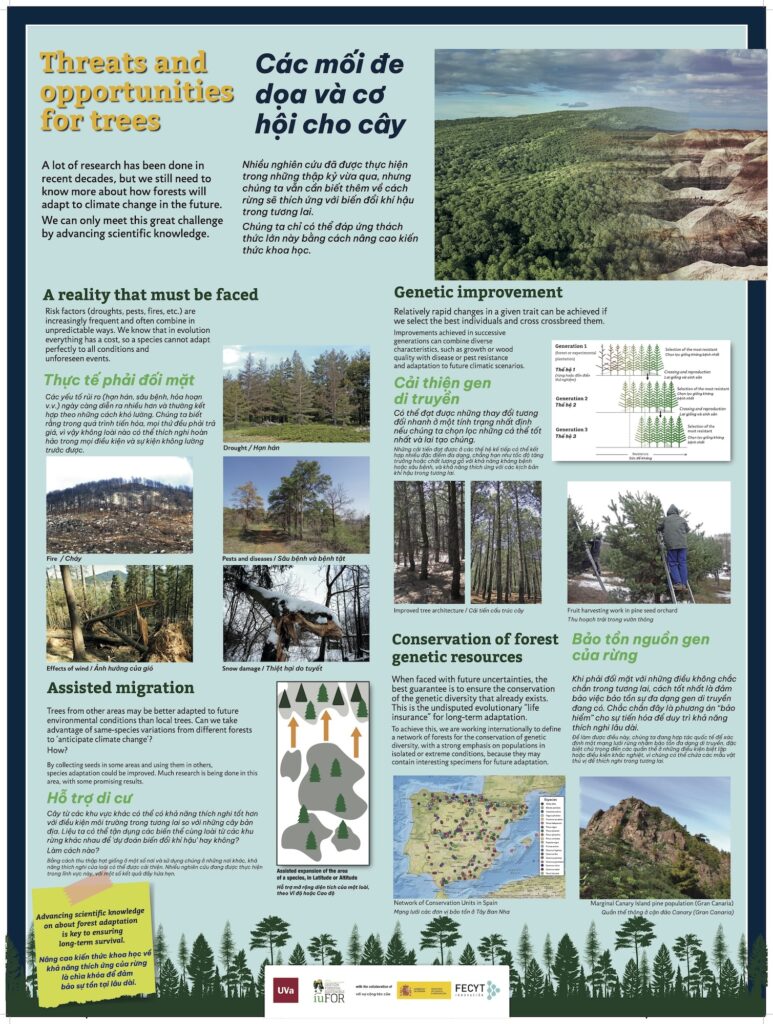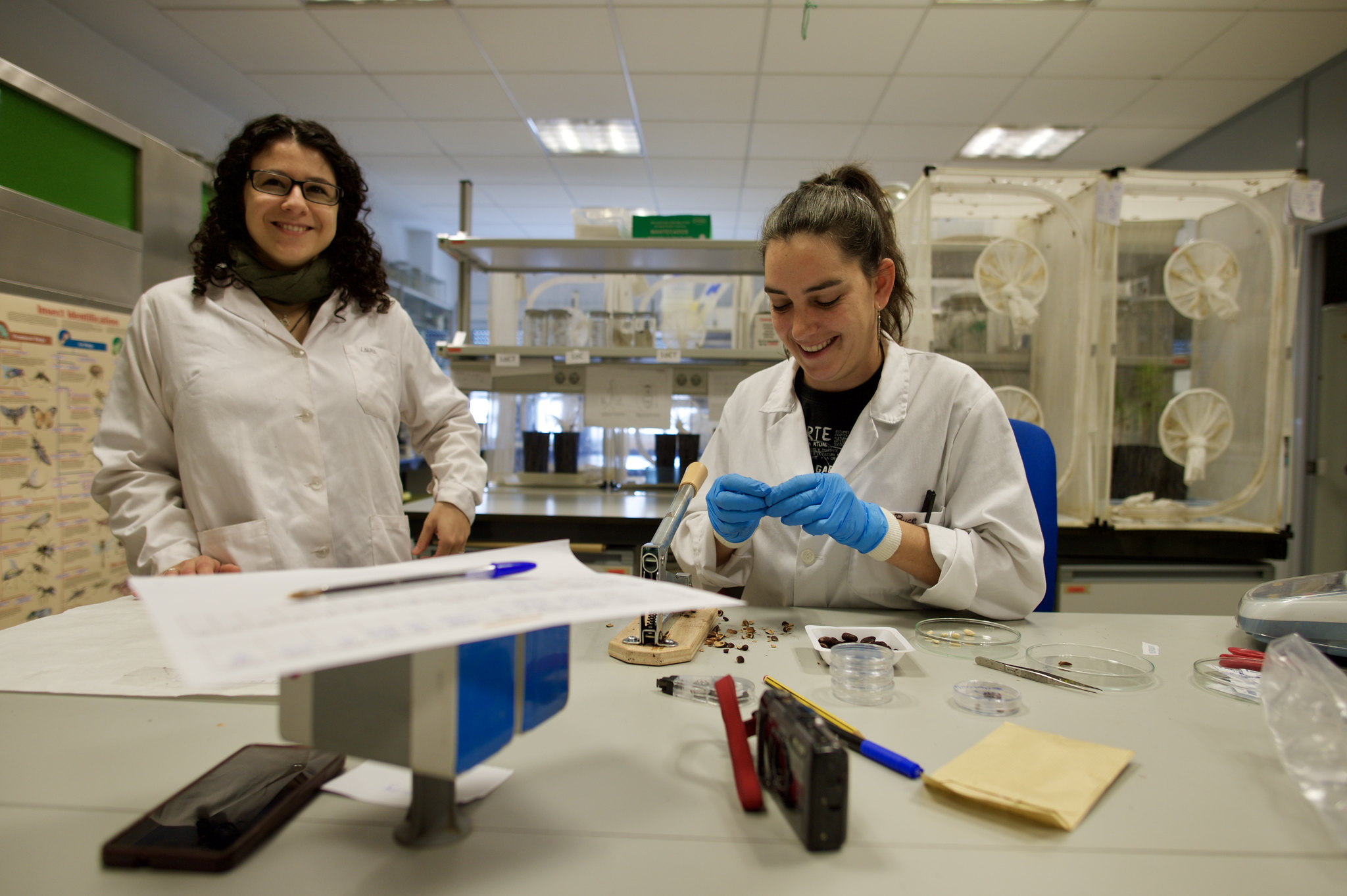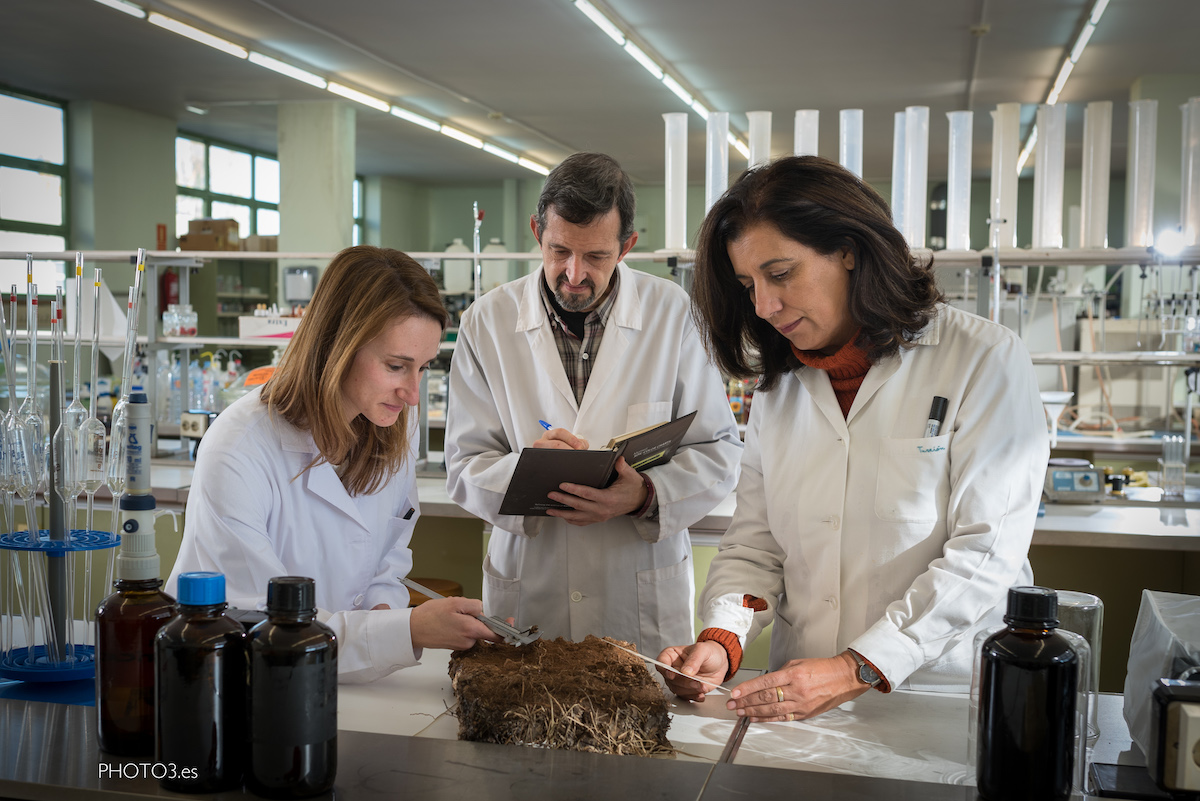In response to significant environmental change, species can migrate, adapt, or go extinct. The speed of current climate change is unprecedented.
What can trees do?
Trees, like all living organisms, adapt to environmental changes. For instance, it is known that they adjust their growth according to their surroundings, and in some ways, they are adapting to climate change by making more efficient use of available water.
Their main characteristics are:
•Trees can live for decades or even centuries.
•They continue growing throughout their lives and can reach large sizes.
•They produce a large amount of pollen and seeds.
•Of all the seeds produced, only a few will grow into mature trees.
•They have significant defence mechanisms against pests and diseases.
•Many decades, even over a century, can pass between one tree generation and the next… and there is tremendous diversity among tree species.
What do we mean by adaptation, and how do we measure it?
Different trees are the result of hundreds of millions of years of evolution. Natural selection is one of the primary forces of evolution, but it is not the only one.
How does natural selection work?
Only the best-adapted individuals survive and reproduce, leading to species that are suited to their environment. This process also favours differentiation within populations of the same species, resulting in varied characteristics in different locations.
Not everything we observe about a tree is necessarily adaptive. Any trait in an individual results from both its genes and the environment where it lives.
To understand how species adapt to their environment, it’s necessary to distinguish between these two factors. This is achieved through genetic trials where different populations of a species are grown in the same environment for comparison.
The external appearance of a tree is called its phenotype, which we assess by various traits, such as bark thickness, the number of fruits, or the amount of a specific chemical compound, among others.
External changes
Some of these traits (phenotypic traits) can change over the years due to environmental effects. This effect is known as “plasticity,” which can be significant.
Factors such as resource availability (water, nutrients, light), wind, pests, and even fire are environmental influences that can cause substantial phenotypic changes, as shown in the following examples.
The need to study tree genetics
Due to their evolutionary history, forest species contain a high level of genetic diversity. Understanding this diversity is essential to predicting how these species will respond to climate change.
Genetic trials help us understand the differences between trees and populations (P1, P2, P3, P4, P5, and P6) of the same species under different conditions (A1, A2, A3). This knowledge helps us select the best locations for planting trees where they can thrive.
Genetic variability within a species and its ability to adjust its phenotype to different environments determine its aptitude to face global change.
Threats and opportunities for trees
Although significant research has been conducted in recent decades, we still need more knowledge about how our forests will adapt to climate change in the future.
Only by advancing scientific knowledge can we tackle this great challenge. Risk factors (droughts, pests, fires, etc.) are becoming more frequent and often combine in unpredictable ways. In evolution, everything has a cost; therefore, a species cannot adapt perfectly to all conditions and unforeseen events.
Assisted migration
Trees from other regions may be better suited to future environmental conditions than local trees. Could we use these differences within the same species to “get ahead of climate change”?
How?
For example, by collecting seeds from one area and planting them in another, we could improve the adaptability of tree species. Significant research is underway on this topic, with some promising results.
Genetic improvement
Relatively rapid changes in specific traits can be achieved by selecting the best specimens and crossbreeding them.
Successive generations can combine various traits, such as growth rate or wood quality, with resistance to diseases or pests and adaptation to future climate scenarios.
Conservation of forest genetic resources
In the face of future uncertainties, the best guarantee is to ensure the conservation of existing genetic diversity. This is an essential “evolutionary insurance policy” for long-term adaptation.
To achieve this, efforts are underway at an international level to define a network of forests for the conservation of genetic diversity, with a focus on isolated populations or those living under extreme conditions, as these may contain valuable specimens for future adaptation.

